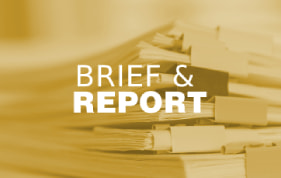HMA focused this paper on how states disperse Medicaid funds to certain subpopulations within the program’s categorical eligibility infrastructure. A previous companion paper centered on increasing our understanding of Medicaid managed care spending by provider, offering more detail on the relative order of magnitude of the amounts spent on inpatient and outpatient hospital care, professional services, long-term care, pharmacy, and other health services.
As the latest national Medicaid managed care enrollment data show 75% of Medicaid beneficiaries were enrolled in comprehensive managed care organizations (MCOs), these two foundational papers illustrate the importance of developing a sound methodology to reliably estimate costs associated with MCOS. These papers, which are the first to present findings related to the development of the MCO methodologies, help lay the foundation for further work that will enable us to answer relevant questions, including:
- How much do we spend on Medicaid patients with chronic conditions like asthma, diabetes, and hypertension?
- How much do we spend on Medicaid patients receiving long-term services and supports (LTSS) and what is the unmet need?
- How is Medicaid funding spent on childbirth and a child’s first year of life?
- What are the opportunities to be more efficient and effective with Medicaid resources?
